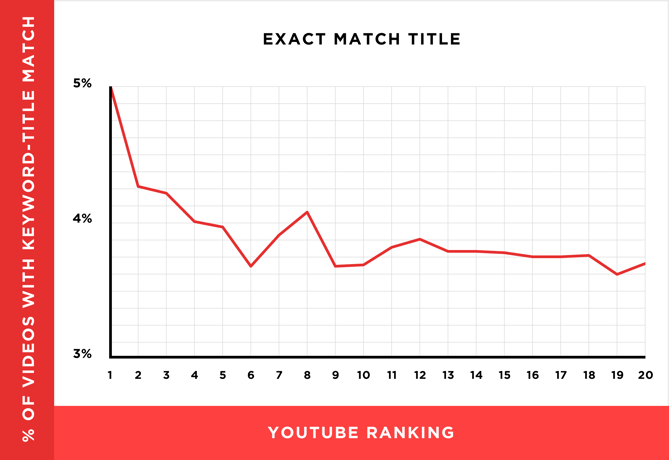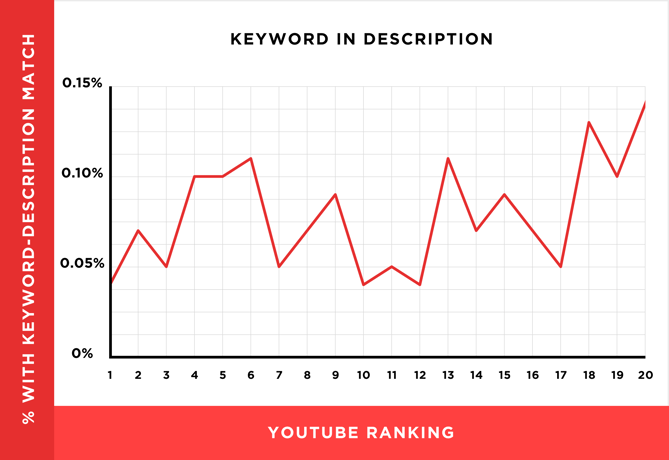Video — continues to be on the growth. According to the 2018 State of Inbound report, 45 percent of marketers were investing more in YouTube over the course of last year — more than any other advertising channel available to them.
However, how does YouTube search engine optimization work? What are the steps you should take to optimize your YouTube channel for search? We have outlined some major Youtube SEO tips below.
Six YouTube SEO Tips in 2019
1. Rename your video file using a target keyword.
Similar to you would when optimizing written content, you will use an SEO tool to first identify keywords you need your video to concentrate on (you could browse popular YouTube SEO tools below those tips, or just click on that link earlier in this sentence).
With a keyword identified, the first place you need to put it’s your video file — before you even add it to YouTube. Why? YouTube cannot truly “watch” your video to see how relevant it’s to your goal key phrase, and as you will learn in the tips under, there are only so many places you could safely insert this keyword in your video’s viewing page once it is posted. However, YouTube can read your video’s file name and all of the code that comes with it when it is published.
With that in mind, replace the “business_ad_003FINAL.mov” file name (do not be embarrassed … we have all been there during post-production) with your desired keyword. In case your keyword is “house painting tips,” for instance, your video’s file name needs to be “house-painting-tips” followed by your preferred video file kind (MOV, MP4, and WMV are some of the most common which are compatible with YouTube).
2. Insert your keyword naturally in the video title.
Once we seek for videos, one of the first things that our eyes are drawn to is the title. That is usually what determines whether or not the viewer will click on to watch your video, so the title shouldn’t only be compelling, but also clear and concise.
Though your keyword plays an enormous part in your video title, it additionally helps if the title closely matches what the viewer is looking for. Research conducted by Backlinko found that videos with an exact keyword match in the title have only a slight benefit over those that do not. Here’s a linear representation of these findings:
Source: Backlinko
So, while “using your target keyword in your title could assist you to rank for that term,” report author Brian Dean explains, “the relationship between keyword-rich video titles and rankings” is not always a powerful one. Nonetheless, it is a great idea to optimize your title for this keyword so long as it matches naturally into a title that tells viewers exactly what they are about to see.
Lastly, ensure to keep your title fairly short — HubSpot campaigns manager Alicia Collins recommends limiting it to 60 characters to help keep it from getting cut off in results pages.
3. Optimize your video description.
First things first: According to Google, the official character limit for YouTube video descriptions is 1,000 characters. And while it is okay to use all that area, keep in mind that your viewer most likely came here to look at a video, not to read an essay.
When you do select to write a longer description, remember that YouTube only shows the first two or three lines of text — that amounts to around 100 characters. After that point, viewers need to click on “show more” to see the total description. That is why we suggest front-loading the description with the most important info, like CTAs or crucial links.
As for optimizing the video itself, it does not hurt to add a transcript of the video, particularly for those who have to watch it without volume. That mentioned, Backlinko’s analysis additionally found no correlation between descriptions that were optimized for a certain keyword and the rankings for that term.
Supply: Backlinko
Dean is careful not to encourage ditching an optimized description altogether, although. “An optimized description helps you illustrate up in the suggested videos sidebar,” he writes, “which is a major source of views for most channels.”
4. Tag your video with popular keywords that relate to your topic.
YouTube’s official Creator Academy suggests using tags to let viewers understand what your video is about. However, you are not just informing your viewers — you are additionally informing YouTube itself. Dean explains that the platform uses tags “to know the content and context of your video.”
That way, YouTube figures out the way to associate your video with related videos, which might broaden your content’s reach. However, select your tags correctly. Do not use an irrelevant tag since you think it will get you more views — honestly, Google may penalize you for that. And similar to your description, lead with the most important keywords, adding a great mix of these which are common and more long-tail (as in, those that reply a question like “how do I?”).
5. Categorize your video.
When you add a video, you could categorize it under “Advanced settings.” Selecting a category is another method to group your video with similar content on YouTube so it winds up in different playlists and gains exposure to more viewers who identify with your viewers.
It may not be as simple as it looks. Actually, YouTube’s Creator Academy suggests marketers go through a comprehensive process to find out which category each video belongs in. It is useful, the guide writes, “to consider what’s working well for each category” you are considering by answering questions like:
- Who’re the top creators within the category? What are they known for and what do they do well?
- Are there any patterns between the viewers of comparable channels within a given category?
- Do the videos within a similar category have share qualities like production worth, length, or format?
6. Upload a custom thumbnail image for your video’s result link.
Your video thumbnail is the main picture viewers see when scrolling through a listing of video outcomes. Along with the video’s title, that thumbnail sends a signal to the viewer about the video’s content, so it could impact the number of clicks and views your video receives.
When you could always pick one of the thumbnail options auto-generated by YouTube, we highly recommend uploading a custom thumbnail. The Creator Academy reports that “90percent of the best performing videos on YouTube have custom thumbnails,” recommending using pictures which are 1280×720 pixels — representing a 16:9 ratio — which are saved as 2MB or smaller .jpg, .gif, .bmp, or .png files. When you follow these parameters, it could help to make sure that your thumbnail appears with equally high quality across multiple viewing platforms.
It is vital to note that your YouTube account must be verified in order to add a custom thumbnail picture. To do that, visit youtube.com/verify and follow the instructions listed there.
7. Use an SRT File to add subtitles & closed captions.
Like much of the other text we have discussed right here, subtitles and closed captions could increase YouTube search optimization by highlighting vital keywords.
In order to add subtitles or closed captions to your video, you will have to add a supported text transcript or timed subtitles file. For the former, you could also directly enter transcript text for a video so that it auto-syncs with the video.
Including subtitles follows a similar process, but you could limit the amount of text you want to display. For either, head to your video manager then click on “Videos” under “Video Manager.” Find the video you need to add subtitles or closed captioning to and click on the drop-down arrow next to the edit button. Then, select “Subtitles/CC.” You could then choose how you’d like to add subtitles or closed captioning.
Find out how to add closed captions to your YouTube video in the video below.



